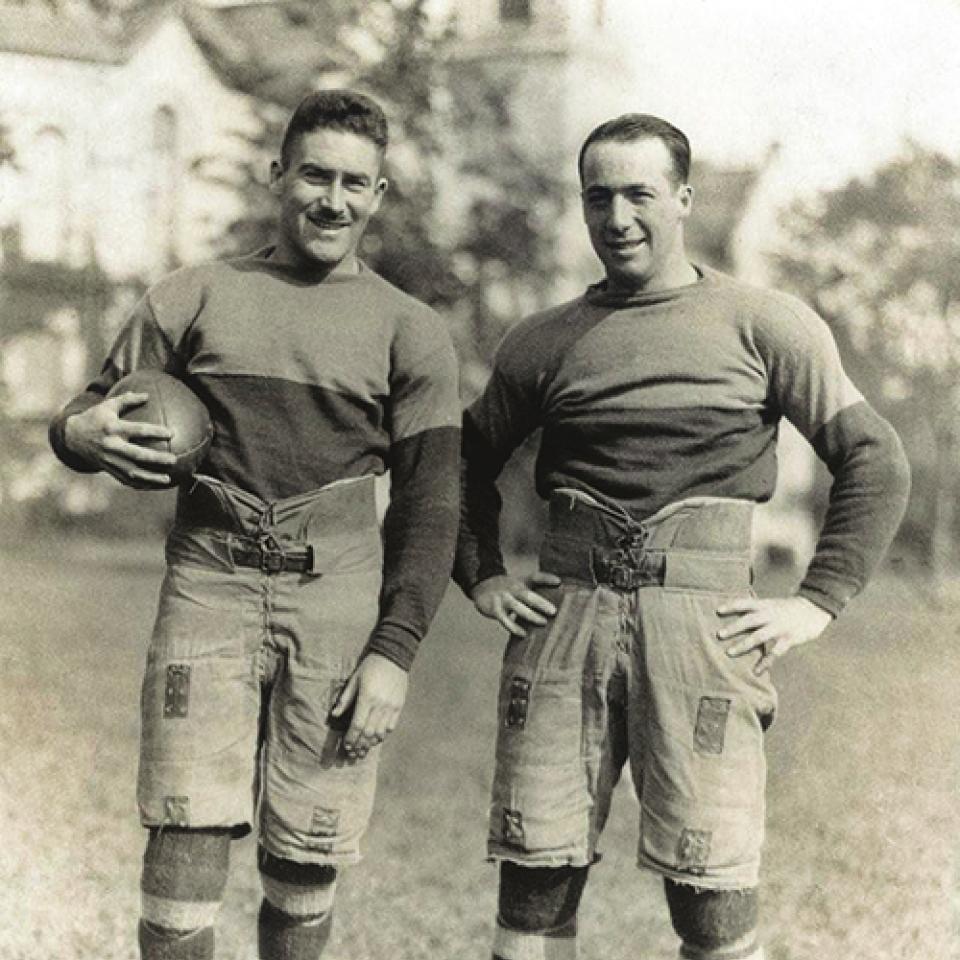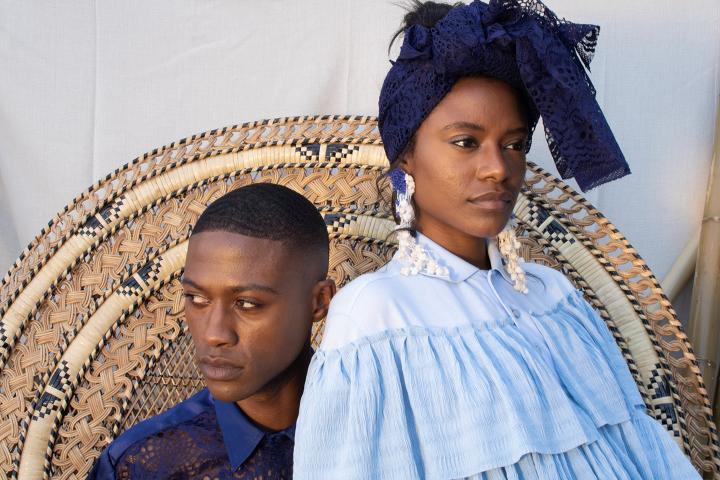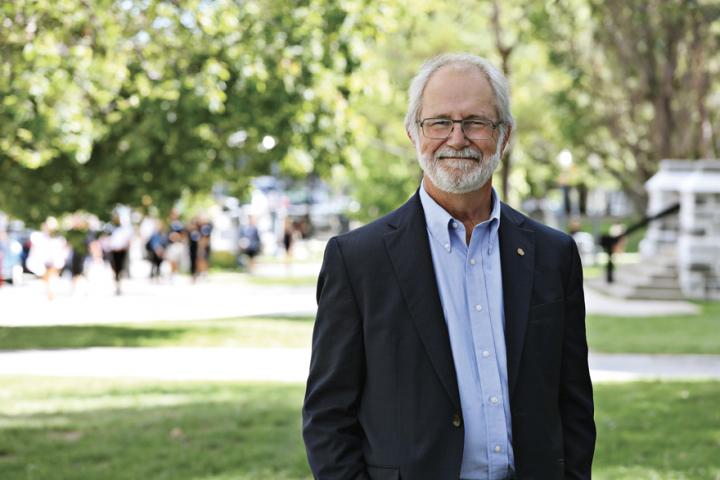While not everyone may yet have heard, this year marks the 100th birthday of the Grey Cup. It has from its donation by the then-Governor General Earl Grey been intended to recognize football supremacy in Canada. What many people in the Queen’s family may not realize is that the Tricolour won the Grey Cup three times – in 1922, 1923, and 1924. In so doing, the team set several Grey Cup records that still stand today. Is there a story here? You bet!
It starts with a determined recommitment to football after WWI led by Engineering professor Lindsey Malcolm and strongly supported by the University’s administration under Principal R.B. Taylor and by its alumni, particularly the Richardson family.
Queen’s had enjoyed considerable pre-war success dating particularly from the University’s first Dominion championship in 1893 involving the legendary Guy Curtis among others. But with the exception of several intercollegiate championships in 1900 and 1904, it had lost serious ground to Varsity and McGill up to and through WWI. Two abysmal seasons immediately after the war had stung the school’s collective pride, and Queen’s moved to once again become competitive.
In less than two years it reorganized the administrative and financial control of athletics; obtained $50,000 from the Richardson family for a new stadium(finished by October 1921); built a practice field beside the stadium (adjacent to today’s Tindall Field); hired a full-time Athletic director (George Awrey) and trainer (William “Billy” Hughes); and recruited some new players, most notably Frank “Pep” Leadlay, BSc’25. These moves produced immediate results.
The 1921 season was a big improvement over the two previous ones – the Tricolour finished with a two-and-two record after going winless in four games in 1920 – and by 1922 the Tricolour was ready to roll. “Active recruiting” had also brought to Queen’s, among others, Harry “Red” Batstone, BCom’26, MD’32, star of the previous year’s Grey Cup for the Argonauts of Toronto.
Over the next four seasons the team from this small school in a provincial city in Ontario went on to win 23 of 25 games, four intercollegiate championships, and three Grey Cups. Strong institutional backing, money and hard work make the most sense as explanations. George Awrey essentially copied the American college football system of the time as he understood it, and enjoyed the same success such a focused effort usually brings. (The Laval football program is perhaps another example in more recent times of just such an approach and of the results it brings.)
But what about those Grey Cups, you may wonder?
Well, in 1922 Queen’s beat Varsity in a playoff to win the Intercollegiate championship, then beat the champions of the Eastern city league, the Toronto Argonauts, 12-11, to secure the Eastern Canadian championship. Finally, Queen’s beat the Western champs, the Edmonton Elks, earlier and later known as the Eskimos, in Kingston on December 2, 1922 on frozen ground after a snowstorm, 13-1, to win the Grey Cup. The University, and the city, went wild in ways reminiscent of the first Dominion championship in 1893. Full-page stories in the Whig, speeches, and parades were the order of the day. Awrey, Hughes, and the players had delivered.
In 1923 the team defeated the (Ottawa) Rough Riders and the Argos in exhibition games; trounced McGill and Varsity twice each in the regular season; beat the Hamilton Tiger Cats at Kingston for the Eastern Canadian championships; and rolled over the Regina Roughriders on December 1 in Varsity Stadium in Toronto to win the Grey Cup. It was this Grey Cup victory, won by a score of 54-0, that left its mark in the Grey Cup record books – most points in a Grey Cup game (this in an era when a touchdown was worth only five points), most touchdowns, highest shutout score (a record which Queen’s also holds in Vanier Cup play, 31-0 versus St. Mary’s in 1992), and so on.
The team rolled on through the 1924 season virtually unchanged in personnel and certainly untouched by the opposition. For several reasons, the West decided not to challenge for the Cup that year so the Tricolour’s 11-3 victory over Balmy Beach, was considered the Grey Cup, and Queen’s had its third championship in a row. It was the second team to that point to win three consecutive Cups, (Varsity having accomplished the same feat 1909-11), and having outscored its opponents, 78-4, also a record that still stands.
That ended the run. Queen’s would never again play for the Grey Cup, despite getting to the Eastern Canadian championships in 1925, 1927, 1929, and 1935, Queen’s came up short on all four occasions. It had been quite a time.
The names of the stars of the Grey Cup championship teams are familiar to everyone who knows Queen’s football. In addition to Pep Leadlay, and Harry Batstone, there were the famous Kingston boys, Drs. Johnny Evans, MD’24, and 1923 team captain William A. “Doc” Campbell, MD’24. Their teammates George “Curly” Lewis, Sc’22; Orrin Carson, Sc’23; Presley McLeod, BA,'21, MD'26, and “Red” McKelvey, BA’23, MD’26, LLD’54, all became doctors, too. Throw in Dave Harding, MD’28, Eric “Bud” Thomas, BCom’26, Norman “Liz” Walker, MD’28, Charles “Chick” Mundell, BCom'24, MD'30, and Bill Muirhead, MD’26, every one of whom were league all-stars at their positions at one time or another, and one gets the idea it must have been quite a cast indeed.
While a Queen’s team never again played for the Grey Cup, selected players down the years have, of course, been involved. Some in important ways. One thinks of Leadlay’s three other Grey Cups with Hamilton and Batsone’s two with Toronto; four each for Ronnie Stewart, Arts/PHE’57, and Tom Beynon, Sc’65; Bob Howes, Arts’66, and Stu Lang’s, Sc’74, astonishing eight and seven respectively with Edmonton. In recent times Rob Bagg, Artsci’07, with Saskatchewan and Mike Giffin, Artsci’08, twice with Montreal. Doubtless there are others who could also be mentioned. (If you know of someone who should have been included in that list, please write or email the Review and let us know.)
With all of the hoopla around the Grey Cup’s 100th anniversary, it’s important to remember that there’s both a Queen’s chapter in the Cup’s history as well as some additional important footnotes in there amongst all the hype and commercialism that the game has become. And it’s a record-setting, honourable one, too, something you can bet that the spirits of especially those 1920s lads will be rattling on about wherever they might be getting together to celebrate the occasion. We should do no less. Cha gheill!
Note: For the full story of the Tricolour’s three consecutive Grey Cup wins, 1922-24, please see pp. 49-54 of Merv Daub’s 1996 history of the Queen’s football program, Gael Force. The above article also owes a debt of gratitude to Shannon Ballard, Arts’00, Director of Marketing for the CFL, whose assistance and enthusiasm made the article possible, and to Larry Robertson, consulting statistician to the CFL, whose statistical contributions helped document the record.


